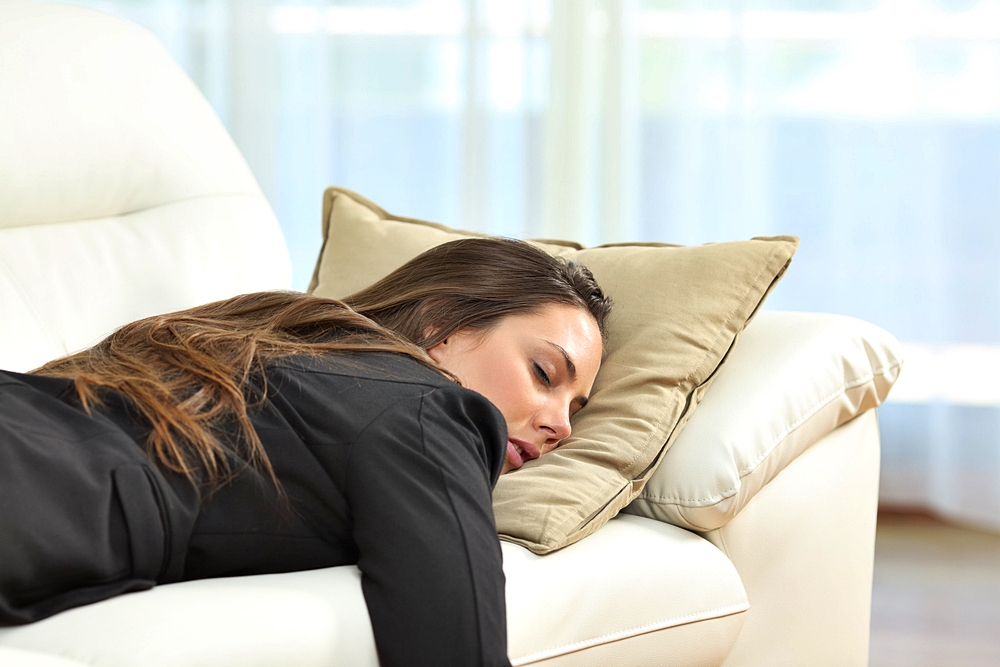Narcolepsy, as it is popularly known, is not as simple as napping, falling asleep, sleeping a lot or sleeping standing up, negatively affects daily life. Because narcolepsy patients can sleep in a very short time while working, driving or standing on public transportation. The disease that causes traffic and work accidents is diagnosed with a sleep test; can be cured in a short time.
Sleep is an active process of the brain
Besides a healthy diet and exercise, sleep has a great effect on health. Many physiological tasks accelerate during sleep. Some of the vital tasks required for a person to stay healthy and to live in the best way can only be fulfilled during sleep. Contrary to popular belief, sleep is not a passive but an active process of the brain. Normal initiation, maintenance and termination of sleep requires the normal functioning physiological processes of the brain. However, some problems in this process bring about sleep disorders.
Patients can sleep even at red light
Sleep disorders also increase the rate of hypertension, diabetes, obesity, immune system diseases and other chronic diseases. There are hundreds of sleep disorders. Excessive daytime sleepiness is also a common symptom for many diseases. However, one of the most important diseases that should not be forgotten is “Narcolepsy”. Here, patients want to sleep for almost 24 hours. Patients fall asleep while driving or working at a red light and become unable to work. Work accidents are a disease that causes traffic accidents. In this sense, narcolepsy negatively affects daily life.
One of the symptoms is known as nightmare
Narcolepsy is a problem in which there are unavoidable sleep attacks during the day and the person feels constantly tired outside of sleep. Symptoms of narcolepsy include relaxation of the patients’ muscles. Usually, sudden loss of strength may occur in the arms, legs and trunk during falling asleep. Another symptom of narcolepsy is sleep paralysis, which is known as “Nightmare” in the society. In other words, the patient experiences some hallucinations while falling asleep or waking up.
One should be very careful during the day
There are many stages of sleep and sleep stages are shaped according to the physiological change of the person. For example, newborn babies sleep frequently until a certain age. As the age progresses, there is no daytime sleep, only the night. As the person gets older, he enters a sleep process similar to that of infancy. However, this is not the case in narcolepsy patients. The patient can sleep in many places during the day.
A disease that responds to medications
There are stages of sleep. There are two sleep phases: Non-REM sleep and REM or paradoxical sleep. Non-REM sleep consists of 4 stages. The state of wakefulness has changed in the stage called stage 0. In stage 1, sleep suppresses. The person who is awakened during this period says that he is awake. In stage 2, when the person was awakened, he remained asleep enough to realize that he was asleep. During Stage 3 and Stage 4, the person’s brain waves are slow. Then, REM sleep is started. However, narcolepsy patients only have REM sleep. Narcolepsy is a drug-responsive disease. Narcolepsy can be prevented with medication.
Diagnosed by a sleep test
Narcolepsy can be diagnosed during the examination, and when the symptoms are suspicious, it is easily diagnosed with sleep tests. The sleep test is a test that monitors many systems. Brain activity in the test; abdominal, rib cage, eye, jaw and leg movements; Many parameters such as heart rhythm, snoring, lying position, breathing pause, blood oxygen level are recorded by connecting various electrodes to the patient. Afterwards, all data is transferred to the computer and the evaluation process begins. Patients sleep at their normal time and are monitored until they get up in the morning. According to these results, narcolepsy is diagnosed and drug treatment is started.
Pay attention to these for sleep hygiene
Sleep is an average process of 8 hours. The need for sleep may vary from person to person. Some feel healthy with 6 hours of sleep, others think they have to sleep for 10 hours. In other words, if there is a sleep zone other than 6-10 hours, these people have sleep problems. In order to prevent these, sleep hygiene should be ensured first. Important points for sleep hygiene are:
- Eating too much should not be eaten in the evening and feeding should be stopped a few hours before sleep.
- Potassium values in the body should be kept in balance.
- Pay attention to go to bed on time.
- The environment to sleep in must be clean.
- The environment should be suitable in terms of lighting, temperature and ventilation.
- There should not be devices such as phones, tablets and televisions in the room.
- Materials such as beds and quilts should be suitable for the person.
- Caffeine and alcohol should not be consumed in 4-5 hours before sleep; smoking should not be.
- 45 minutes should not be exceeded during daytime sleep.
If these conditions are met, but still experiencing sleep problems, a neurologist should be consulted immediately.

